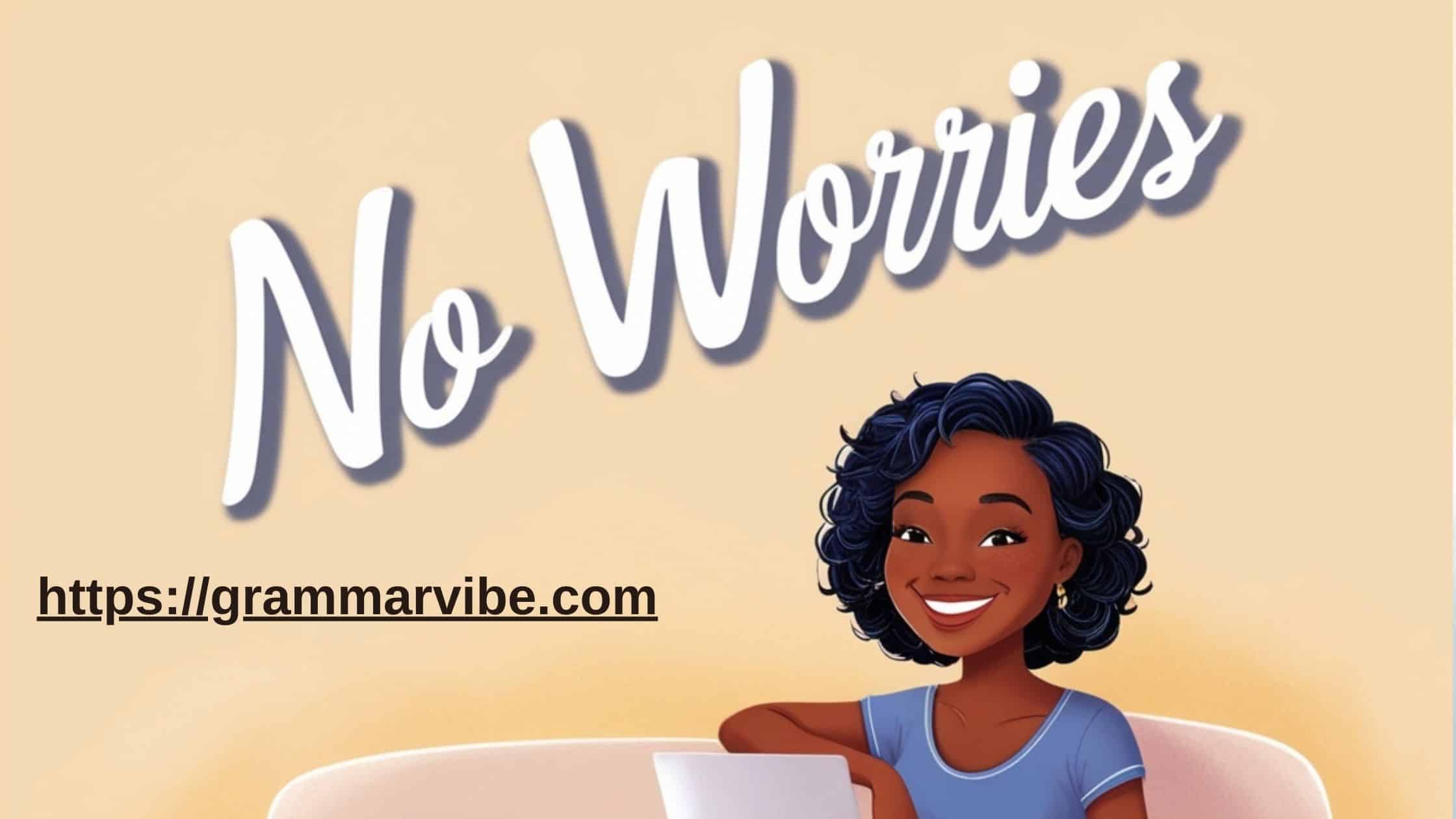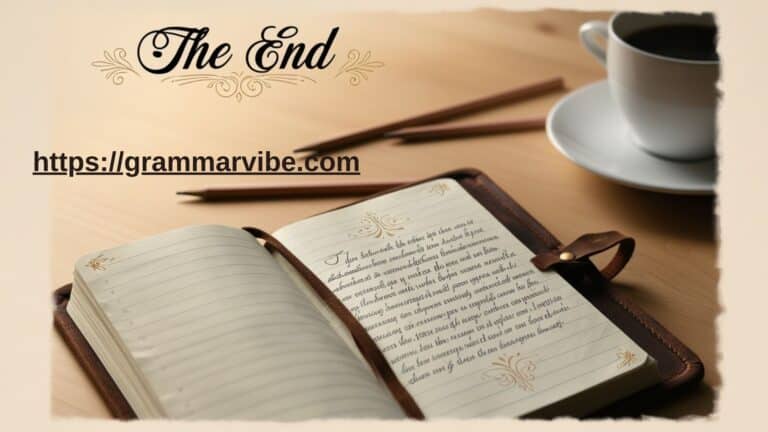In everyday communication, we often hear people casually saying “No worries” as a way to reassure someone that everything is fine. However, while this phrase is friendly and approachable, it may not always be appropriate for professional communication, especially in more formal or business settings. Fortunately, there are several alternative phrases that can maintain a positive tone and convey the same sentiment, but with a more polished, respectful touch.
Here, we’ll explore 15 alternative ways to say “No worries” in a professional manner. These alternatives are perfect for emails, meetings, and other business interactions where you want to maintain a polite and professional demeanor. Additionally, we’ll provide scenario examples to demonstrate how these phrases can be used in both formal settings and informal communication.
1. You’re Welcome
“You’re welcome” is one of the most common and polite responses in both professional and personal settings. It’s a universal phrase that acknowledges the gratitude someone expresses while maintaining a respectful and cordial tone. Whether you are dealing with a colleague or a client, saying “You’re welcome” conveys both humility and professionalism.
Example:
In a work email, you might say:
“Thank you for your help with the project. It’s really appreciated.”
“You’re welcome, Sarah! I’m glad I could assist you.”
2. Not a Problem
This phrase is often used in informal communication but can be made to sound professional when used in the right context. It conveys that you were happy to help and that the request was no trouble at all. It’s excellent for interactions with colleagues or clients where you want to come across as approachable and eager to assist.
Example:
“Thanks for helping me organize the meeting.”
“Not a problem, James! Let me know if you need any further assistance.”
3. Don’t Mention It

“Don’t mention it” is a humble, casual response that downplays the effort involved in assisting someone. While it’s informal, it can be used professionally when you want to express that helping someone wasn’t a burden.
Example:
“I appreciate you taking the time to answer my questions.”
“Don’t mention it, Emma! It was my pleasure to help.”
4. My Pleasure
If you want to add a touch of politeness and convey genuine appreciation for the opportunity to assist, “My pleasure” is an excellent choice. This phrase is particularly useful in situations where you want to show that you took joy in helping the other person.
Example:
“Thank you so much for your help with the presentation.”
“My pleasure, Robert! I’m happy I could contribute.”
More for you: 15 Other Ways to Say “Please Advise”
5. Glad to Help
This phrase is warm and friendly, yet still professional. It expresses willingness to help without sounding overly casual. It’s especially suitable when you want to reassure someone that they can rely on you for future assistance.
Example:
“Thanks for sorting out the issue with the system.”
“Glad to help, Claire! Let me know if anything else comes up.”
6. It Was Nothing
“It was nothing” is a way to downplay your efforts while still accepting gratitude. While informal in tone, it can be used professionally in environments where you want to be humble and not make the other person feel uncomfortable for thanking you.
Example:
“I really appreciate your help with this report.”
“It was nothing, John. Happy to assist!”
7. Anytime
“Anytime” is a casual but effective response that shows your willingness to help again in the future. It signals that you are open and available for future tasks or requests, making it a good choice for maintaining a friendly tone in professional exchanges.
Example:
“Thanks for stepping in to help with the presentation.”
“Anytime, Sarah! I’m always happy to pitch in.”
For your interest: 15 Other Ways to Say “Great Asset to the Team”
8. No Problem
“No problem” is another casual yet widely accepted phrase. It suggests that the task you helped with was not difficult or troublesome. It’s especially useful in informal settings, but if used correctly, it can work in professional exchanges too.
Example:
“I appreciate you helping me with this issue late in the evening.”
“No problem, Mark! I’m glad I could help you resolve it.”
9. No Big Deal
This phrase minimizes the task at hand, reassuring the other person that their request didn’t cause any inconvenience. While casual, it is often used in professional settings where a more relaxed tone is appropriate.
Example:
“Thanks for helping me out when I was stuck with the client.”
“No big deal, Lisa. Glad I could help!”
10. Sure Thing
“Sure thing” is an affirmative phrase that signals eagerness to assist. It works well in informal settings, especially in exchanges between colleagues or when responding to requests for help. While casual, it can still be professional in the right context.
Example:
“Thanks for covering for me during my lunch break.”
“Sure thing, Mike! Always happy to help out.”
You might also like: 15 Other Ways to Say “You As Well”
11. I’m Happy to Help
This phrase strikes a balance between professionalism and friendliness. It shows appreciation for the opportunity to help and adds a warm, reassuring tone to your response. It is suitable for emails, meetings, or any form of communication where you want to sound approachable.
Example:
“Thanks for assisting with the new project setup.”
“I’m happy to help, Anna! Let me know if you need anything else.”
12. It’s My Pleasure

Similar to “My pleasure,” this expression emphasizes the enjoyment and satisfaction derived from helping. It can be used in formal communication to show that you value the opportunity to contribute.
Example:
“I can’t thank you enough for your assistance with the proposal.”
“It’s my pleasure, David! I’m always happy to support the team.”
13. Happy to Assist
“Happy to assist” is a professional, polite way to indicate that you’re glad to offer help. It works well in client communications and is particularly useful when you need to express willingness to continue helping with ongoing tasks.
Example:
“Thank you for your quick response to my inquiry.”
“Happy to assist, Laura! Let me know if you have any further questions.”
14. I’m at Your Service
This phrase is a more formal response that conveys not just willingness but also a sense of dedication to helping the other person. It’s a great option for situations where you want to express a high level of commitment.
Example:
“Thanks for your help with the financial report.”
“I’m at your service, John! Feel free to reach out anytime.”
Check out this: 15 Other Ways to Say “How Much”
15. It Was My Pleasure to Help
This phrase is polite and professional, and it shows that you took pride in assisting someone. It conveys a respectful acknowledgment of the person’s gratitude while maintaining a formal tone.
Example:
“I really appreciate you taking the time to help me with the report.”
“It was my pleasure to help, Amanda! I’m happy to have been of assistance.”
Table of 15 Alternative Phrases for “No Worries”
| Alternative Phrase | Tone | Use Case |
|---|---|---|
| You’re Welcome | Formal/Informal | Common, versatile response |
| Not a Problem | Informal | Casual, friendly communication |
| Don’t Mention It | Informal | Humble, informal acknowledgment |
| My Pleasure | Formal/Informal | Polite, expresses genuine satisfaction |
| Glad to Help | Informal | Friendly, reassures willingness to help |
| It Was Nothing | Informal | Humble response, downplays effort |
| Anytime | Informal | Casual, reassures willingness to assist again |
| No Problem | Informal | Casual, relaxed response |
| No Big Deal | Informal | Casual, downplays the importance of the task |
| Sure Thing | Informal | Friendly, affirming response |
| I’m Happy to Help | Formal/Informal | Polite, expresses willingness and gratitude |
| It’s My Pleasure | Formal/Informal | Polite, formal response showing dedication |
| Happy to Assist | Formal/Informal | Professional, polite willingness to help |
| I’m at Your Service | Formal | Formal, shows high level of professionalism |
| It Was My Pleasure to Help | Formal | Formal, polite acknowledgment and gratitude |
Conclusion
Using alternative ways to say “No worries” in professional communication helps to maintain a polite tone and encourages respectful interactions. Whether in formal or informal settings, the key is to match your response to the context of the conversation. By using phrases like “You’re welcome,” “My pleasure,” or “Happy to assist,” you can express gratitude and appreciation while ensuring your communication remains clear, friendly, and professional.
Remember, the right choice of words can set the tone for your relationship with colleagues, clients, or peers. By incorporating these 15 alternative phrases into your daily communication, you’ll be able to foster stronger professional connections and build rapport with those around you.

Kyren Paul is an experienced blogger and the creative mind behind “Grammar Vibe.” With a passion for the nuances of English grammar, he brings clarity and insight to everyday language topics, making grammar accessible and engaging for readers of all levels.











Leave a Comment